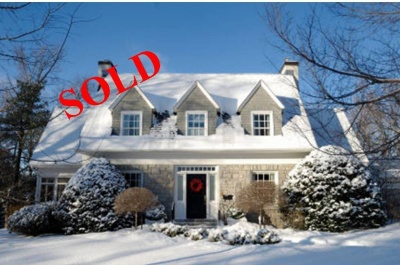
According to the National Association of Realtors, the number of Rhode Island single-family homes sold last month increased 19 percent from December 2010. In addition, pending sales – those sales under contract but not yet closed – rose 17 percent from the year prior. Historically speaking the winter months tend to reflect a decrease in sales overall in Rhode Island, however, these recent statistics have both caught the attention of Rhodes Island’s Realtor President, Jaime Moore and helped shift the debate about listing homes in winter.
“We’re happy to see sales rising again of their own accord,” said Moore. “People are buying for no other reason than they recognize affordability in the market and that’s a good sign. There is no tax incentive or other measures fueling these sales, simply a competitive marketplace and low interest rates.” Jaime Moore, Realtor State President of Rhode Island, RIAR.
While the numbers seem to support the fact that people are buying at an increased rate this winter, apprehension about listing homes in winter continues among both the general public and the real estate community. In fact, I have recently noted fellow agents refer to the upcoming “slow season”, as the temperature outside continues to drop. Perhaps this is the profession’s knee jerk response to the historical market trends this time of year. In my opinion, however, if we are to change history it follows that we, the professionals, have a responsibility to change our mindsets as we approach the months ahead.
So, I’m here to light the flame and carry the torch, as I offer you evidence that listing in winter is actually beneficial to sellers. And, I challenge you to use these findings as ammunition to both change your own mindset and help combat sellers’ apprehension about winter listings.
In a recent study, Redfin, a company of real estate agents and software engineers analyzed 753,093 listings across the United States that came on the market between November 15, 2009 and November 14, 2010. They broke down the data on eventual sale statistics, including percentage sold within a year of listing, days on market for sold listings, and sale to original list price ratio. The results were astounding. They pulled a year’s worth of data on three quarters of a million homes listed across the country and analyzed sales statistics by season. Here’s what they found:
- Homes listed in winter sell faster: 46 days in winter vs. 55 days in summer
- Homes listed in winter are more likely to sell: 59.2% sell in winter vs. 53.1% sell in summer
- Homes listed in winter sell closest to their original price: a 2.7% drop from the final price in winter vs. a 5.2% drop from the final price in summer,.
Based on these findings, homes listed in winter actually sell best! No, you did not misread: Overall, homes listed in winter sell best. 5.8% more homes listed in winter eventually sell (compared to the overall percentage of homes listed throughout the year), and they sell 1.4 percentage points closer to their original list price than the median—that’s $4,900 on a $350,000 home. Of course, listing in winter will not guarantee a faster sale at a higher price. But, what this study helps to prove is winter gets a bad rap for no good reason. It only takes one buyer to sell a home, and this upward trend in winter sales should increase the incentive to list.
I can’t deny the fact that winter listing objections exist. All too often we hear “people don’t want to move in the winter, and my house won’t show well this time of year anyway,” It’s our duty as real estate agents, however, to advise, support and guide our clients in the right direction, and it’s nice to have solid evidence to support the theory that listing in winter works!
To view Redfin’s complete article and study go to: http://blog.redfin.com/blog/2011/12/should_i_wait_until_spring_to_list_my_home.html


